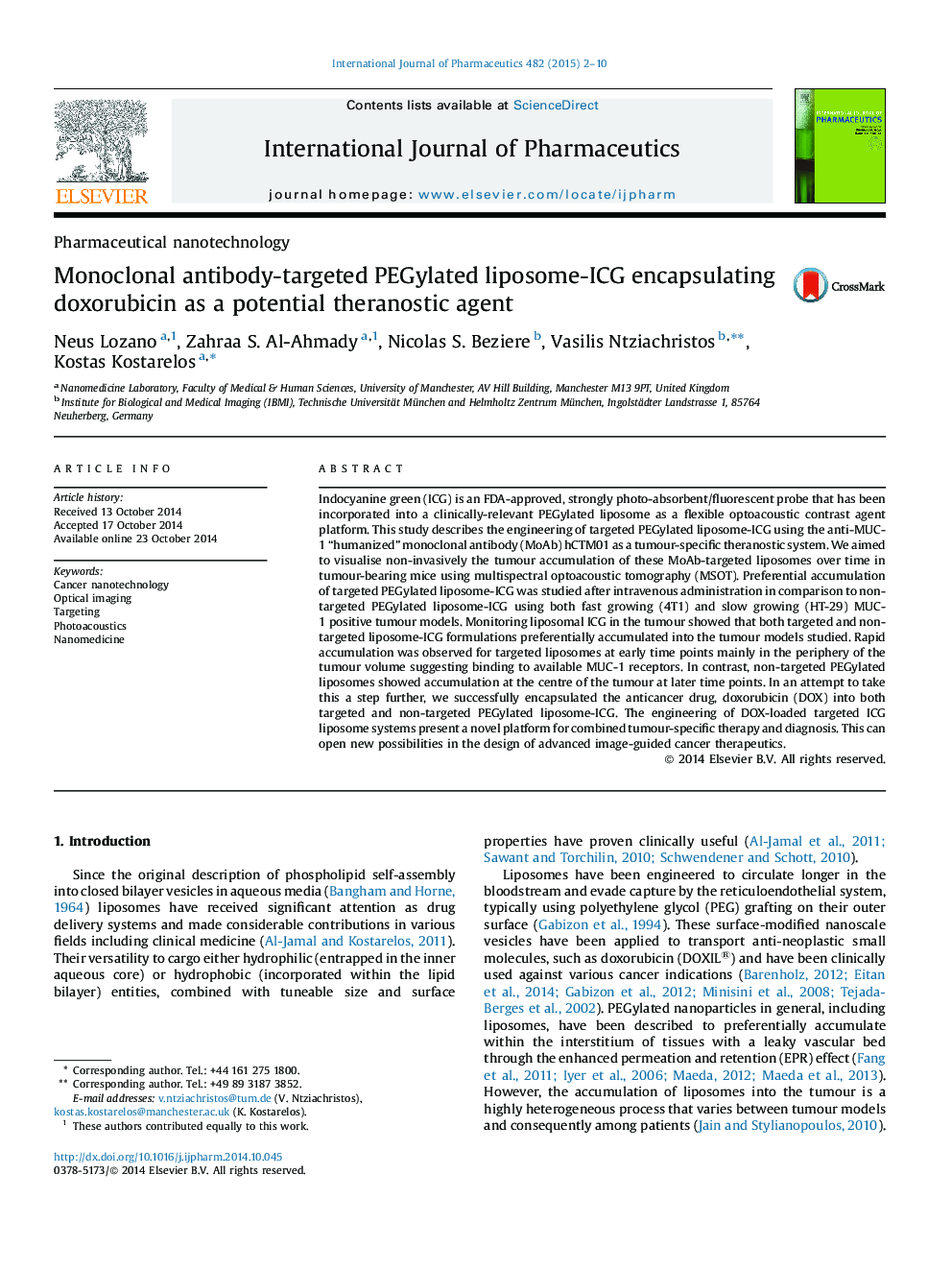| Article ID | Journal | Published Year | Pages | File Type |
|---|---|---|---|---|
| 2501410 | International Journal of Pharmaceutics | 2015 | 9 Pages |
Indocyanine green (ICG) is an FDA-approved, strongly photo-absorbent/fluorescent probe that has been incorporated into a clinically-relevant PEGylated liposome as a flexible optoacoustic contrast agent platform. This study describes the engineering of targeted PEGylated liposome-ICG using the anti-MUC-1 “humanized” monoclonal antibody (MoAb) hCTM01 as a tumour-specific theranostic system. We aimed to visualise non-invasively the tumour accumulation of these MoAb-targeted liposomes over time in tumour-bearing mice using multispectral optoacoustic tomography (MSOT). Preferential accumulation of targeted PEGylated liposome-ICG was studied after intravenous administration in comparison to non-targeted PEGylated liposome-ICG using both fast growing (4T1) and slow growing (HT-29) MUC-1 positive tumour models. Monitoring liposomal ICG in the tumour showed that both targeted and non-targeted liposome-ICG formulations preferentially accumulated into the tumour models studied. Rapid accumulation was observed for targeted liposomes at early time points mainly in the periphery of the tumour volume suggesting binding to available MUC-1 receptors. In contrast, non-targeted PEGylated liposomes showed accumulation at the centre of the tumour at later time points. In an attempt to take this a step further, we successfully encapsulated the anticancer drug, doxorubicin (DOX) into both targeted and non-targeted PEGylated liposome-ICG. The engineering of DOX-loaded targeted ICG liposome systems present a novel platform for combined tumour-specific therapy and diagnosis. This can open new possibilities in the design of advanced image-guided cancer therapeutics.
Graphical abstractFigure optionsDownload full-size imageDownload high-quality image (222 K)Download as PowerPoint slide
